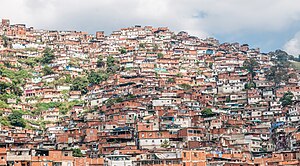
Slums are classified by the United Nations as being housing substandard in quality and safety. Slums are prevalent in developing countries and it is estimated that over one billion people live in what can be considered slums. This figure is expected to double by 2030.
Slums are often characterized by improvised housing that rely upon unconventional building materials and substandard quality of construction. Slums usually have higher rates of alcoholism, drug abuse, and crime. Their residents also struggle with disease and other issues that arise from unsanitary living conditions.
Overcoming the challenges of slums and providing adequate housing for developing countries is one goal of economic development.
The World's Largest Slums:
- Khayelitsha in Cape Town (South Africa): 400,000.
- Kibera in Nairobi (Kenya): 700,000.
- Dharavi in Mumbai (India): 1,000,000.
- Neza (Mexico): 1,200,000.
- Orangi Town in Karachi (Pakistan): 2,400,000.